- Sport Betting
- Yearly calendar
- Latest results
- English Español French Italiano Nederlands
TheSports.org
All sports Site

Tennis - ATP World Tour : Results and calendar for the season 1970
Click on a month to expand/reduce
Postal Address

- {{ subitem.Label }}
- {{ sublevel.Label }}
TOURNAMENT RESULTS
{{tournament.sponsortitle}}, player results.
- Results Archive
- Challenger TV

- Round (All)
- Semi-Finals
- Quarter-Finals
Round of 16
Round of 32, round of 64, round of 128.
- Player (All)
- Adriano Panatta
- Alex Metreveli
- Allan McDonald
- Allan Stone
- Anatoli Volkov
- Andres Gimeno
- Andrew Pattison
- Antonio Munoz
- Arthur Ashe
- Barry Phillips-Moore
- Bernard Montrenaud
- Bill Bowrey
- Bob Carmichael
- Bob Giltinan
- Brian Fairlie
- Butch Seewagen
- Byron Bertram
- Charlie Pasarell
- Chauncey Steele III
- Clark Graebner
- Cliff Drysdale
- Cliff Richey
- Colin Dibley
- D. Richard Russell
- Daniel Contet
- David Lloyd
- Dennis Ralston
- Derek Schroder
- Dick Crealy
- Dimitri Sturdza
- Eduardo Zuleta
- Erik Van Dillen
- Francois Jauffret
- Frantisek Pala
- Fred Stolle
- Frew McMillan
- Georges Goven
- Gerald Battrick
- Graham Stilwell
- Guillermo Vilas
- Hans-Joachim Ploetz
- Harald Elschenbroich
- Haroon Rahim
- Henry (Hank) Irvine
- Herb Fitzgibbon
- Ian Fletcher
- Ilie Nastase
- Ingo Buding
- Ismail El Shafei
- Istvan Gulyas
- Jackie Saul
- Jaidip Mukerjea
- Jaime Fillol Sr.
- Jan Leschly
- Jean-Baptiste Chanfreau
- Jean-Claude Barclay
- Jean-Loup Rouyer
- Jim McManus
- Jim Osborne
- Joaquin Loyo-Mayo
- John Alexander
- John Bartlett
- John Clifton
- John Newcombe
- Jorgen Ulrich
- Jose Edison Mandarino
- Keith Diepraam
- Ken Rosewall
- Koji Watanabe
- Manuel Orantes
- Martin Mulligan
- Marty Riessen
- Milan Holecek
- Nicholas Kalogeropoulos
- Nicola Pietrangeli
- Nicola Spear
- Nikola Pilic
- Owen Davidson
- Pancho J.F. Guzman
- Patricio Cornejo
- Patrick Hombergen
- Patrick Proisy
- Peter Curtis
- Peter Doerner
- Peter Marmureanu
- Pierre Barthes
- Premjit Lall
- Ray Ruffels
- Raymond Moore
- Robert Lutz
- Robert Maud
- Robert Wilson
- Roger Dowdeswell
- Roger Taylor
- Ron Holmberg
- Roy Emerson
- Sergei Likhachev
- Stanley Matthews
- Stepan Koudelka
- Stephen Warboys
- Szabolcz Baranyi
- Taghi Akbari
- Terry Addison
- Toomas Leius
- Torben Ulrich
- Vladimir Korotkov
- Zeljko Franulovic
- Country (All)
- Czech Republic
- Great Britain
- Netherlands
- New Zealand
- South Africa
- Switzerland
- United States
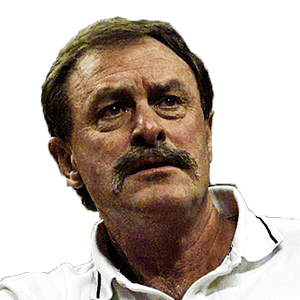
Quarterfinal
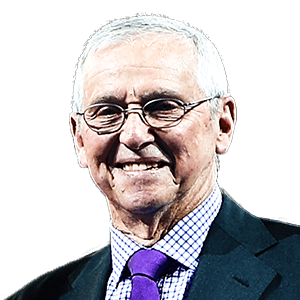
- Most Recent
{{newsitem.title}}
- {{player.ranking}} Rank {{opponent.ranking}}
- {{player.Age ? player.Age : '-'}} Age {{opponent.Age ? opponent.Age : '-'}}
- {{getWeightInLB.player}} Weight {{getWeightInLB.opponent}}
- {{getHeightInFeetInch.player}} Height {{getHeightInFeetInch.opponent}}
- {{getPlayHand.player}} Plays {{getPlayHand.opponent}}
- {{player.ProYear ? player.ProYear : '-'}} Turned Pro {{opponent.ProYear ? opponent.ProYear : '-'}}
- {{item.FirstName}} {{item.LastName}}
© Copyright 1994 - 2024 ATP Tour, Inc. All Rights Reserved. No part of this site may be reproduced, stored in a retrieval system or transmitted in any way or by any means (including photocopying, recording or storing it in any medium by electronic means), without the written permission of ATP Tour, Inc.. Terms & Conditions | Privacy | Modern Slavery Statement | Feedback | Cookies
Singles Champions
HOST CITIES (SINCE 1970)
Nitto ATP Finals is proudly supported by
Title partner, host partner, {{otherpartners[activeslide].title}}.
Terms & Conditions | Privacy Policy | Cookies
ATP Rankings Table 28-12-1970
- 400 points difference means 90% chance for winning
- Start rating is 1500 points
- Minimum is 10 matches
- K-factor base value is 32
- Tournament level adjustment is: Grand Slam 100%, Tour Finals 90%, Masters 85%, Olympics 80%, ATP 500 75% and all others 70%
- Match round adjustment is: Final 100%, Semi-Final 90%, Quarter-Final and Round-Robin 85%, Rounds of 16 and 32 80%, Rounds of 64 and 128 75% and For Bronze Medal 95%
- Best-of sets adjustment: Best-of-5 100% and Best-of-3 90%
- Walk-over adjustment: 50%
- For rating of 1500: x 10
- For rating of 1600: x 5.5
- For rating of 1800: x 1.64
- For rating of 2000: x 1.07
- For rating of 2200: x 1.008
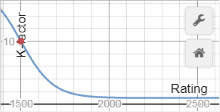
- Each of the above coefficients (tournament level, round, best-of, walkover and current rating) are experimentally and carefully optimized for maximum predictability
- Recent Elo (reflecting more recent form than classic Elo rating): x 2
- Surface factor (for Elo ratings by surface and by outdoor/indoor): Depends on the percentage of surface or outdoor/indoor matches in the season
- Set, Game, Service/Return Game and Tie-Break Elo Ratings K-factor adjustments are work in progress, thus subject to change
- Grand Slam final, rating 2450 d. 2350 (winner had 64% chances of win): [+12, -12] (+12 for winner, -12 for loser)
- Masters semi-final ratings 2000 d. 2350 (winner had 19% chances of win): [+21, -19]
- ATP 250 round of 32, rating 2250 d. 1800 (winner had 93% chances of win): [+1, -2]
GRAND SLAM HISTORY Reference Book. 1877 - 2024

- TENNIS HEADLINES

Dates: Nov 10, 2024 - Nov 17, 2024
ATP Finals Venues
Tokyo : 1970 (Singles and Doubles)
In 2002 Tennis Masters Cup Doubles tournament not held.
Paris : 1971 (Singles)
Barcelona : 1972 (Singles)
Boston : 1973 (Singles)
Melbourne : 1974 (Singles)
In 1971-1974 Masters Grand Prix Doubles tournament not held.
Stockholm : 1975 (Singles and Doubles)
Houston : 1976 (Singles and Doubles), 2003-2004 (Singles and Doubles)
New York : 1977-1985 (Singles and Doubles), 1986-1989 (Singles)
Frankfurt : 1990-1995 (Singles)
Gold Coast : 1990 (Doubles)
Johannesburg : 1991-1993 (Doubles)
Jakarta : 1994 (Doubles)
Eindhoven : 1995 (Doubles)
Hanover : 1996-1999 (Singles)
Hartford : 1996-1999 (Doubles)
Lisbon : 2000 (Singles)
Bangalore : 2000-2001 (Doubles)
Sydney : 2001 (Singles)
Shanghai : 2002 (Singles), 2005-2008 (Singles and Doubles)
London : 1986-1989 (Doubles), 2009-2020 (Singles and Doubles)
Turin : 2021-2024 (Singles and Doubles)
tournament names in previous years
Atp finals - current champions.


Players who won Men's singles and doubles titles at the same ATP Finals
Atp finals records.

List of ATP Finals Winners, Past Champions History Since 1970

ATP Finals champions by year, past winners list, history since 1970
- Nitto ATP World Tour Finals is the 2nd top tier men's Tennis tournament in the Tennis Sport.
- It is held every year in November at Turin, Italy till 2025. It is part of the Association of Tennis Professionals (ATP) World Tour.
- The 1st tournament was organized in 1970 & win by Stan Smith by def. the Rod Laver.
- Novak Djokovic has Surpass the Roger Federer record of having the most singles ATP Final titles with 7th times.
- ATP World Tour Finals doubles title winners Peter Fleming, John McEnroe both have won the most Doubles ATP Finals with 7 times.
- Most Singles Appear. in the ATP World Tour Finals by Roger Federer with 14 times.
- Currently, 2023 Nitto ATP Finals Singles winner's Novak Djokovic who beats the Italian Jennik Sinner to claims the record-breaking SEVENTH ATP Finals title in Turin.
- Djokovic earned a record $4,740,300, the highest payout for a tournament winner in tennis.
- Rajeev Ram and Joe Salisbury claimed $930,300, the highest payout in doubles history.

- WTA World Tour Championship Finals Champions List, Past winners by year.
ATP Finals past winners list by year, history since 1970-2023.
Posted by sports history
You may like these posts.
- Honour Roll
- Listen to the AO
- Premium Experiences
- Travel Packages
Thanks for visiting the Australian Open Website. We can see you’re using Internet Explorer, and wanted to let you know that we will no longer be supporting this browser in future. We’d recommend you download a new browser if you'd like to continue keeping up with all of the latest tennis news!
Looking back at 50 years of rankings
- Suzi Petkovski
The full version of this article first appeared in the August/September 2023 issue of Australian Tennis Magazine, one of the world’s longest-running tennis publications. For more in-depth features, news and analysis, you can subscribe now .
August 2023 marks 50 years since computer rankings. Romanian Ilie Nastase made history as the first No.1, atop the inaugural ATP list of 23 August 1973. Ironically, the showman known as ‘Nasty’ wasn’t a fan of the newfangled official pecking order, believing the cold, hard numbers and pursuit of higher rungs had a chilling effect on player relations.
“I didn’t really have much time to enjoy my top ranking when I had it, because everybody wanted to take it away from me,” Nastase reflected 40 years later, of his 40 weeks at the top.
It’s a refrain from many former No.1s. Enjoyment of the feat is greater in retrospect, partly because the prestige of being numero uno has grown immeasurably over the decades.
Nothing has impacted the game more than computerised rankings, with the arguable exception of tennis going professional in 1968. It’s no exaggeration to say rankings rule the game, and the lives of players. Rankings determine which tournaments players enter, whether they are seeded, or whether they steel themselves for the rigours of qualifying. Aspiring pros literally go to the ends of the earth in pursuit of a precious ranking point.
Rankings before rankings
Given the modern obsession with computer rankings, it’s hard to overstate what a groundbreaker the system was in its day. Even the concept of an official No.1 didn’t exist prior to computer rankings.
Year-end subjective rankings lists, compiled by tennis writers, broadcasters, ex-players and national associations, named their season No.1s and top 10s. But there was no consensus. Creation of computer rankings allowed the players to define No.1 as a new universal measure of greatness, alongside the majors.
The ATP itself was uncertain of how ‘official No.1’ would be accepted. Fans were accustomed to hailing Grand Slam champions as the game’s greats; for many, the Wimbledon winner was de facto world champion. How meaningful was a No.1 ranking in April or August? And players on the computer could ascend to No.1 anywhere. Nastase’s historic feat came in the off-Broadway locale of South Orange, New Jersey. The top ranking could even fall to a player without taking the court – via the loss of a rival in a faraway event.
More from Australian Tennis Magazine
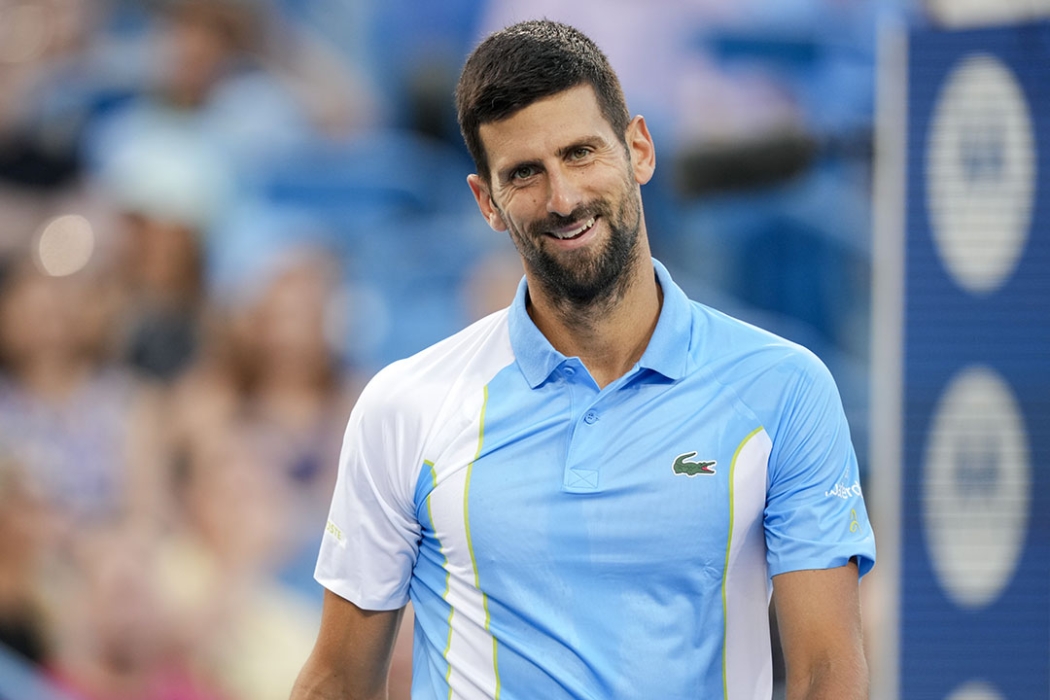
Novak Djokovic: Writing his own history
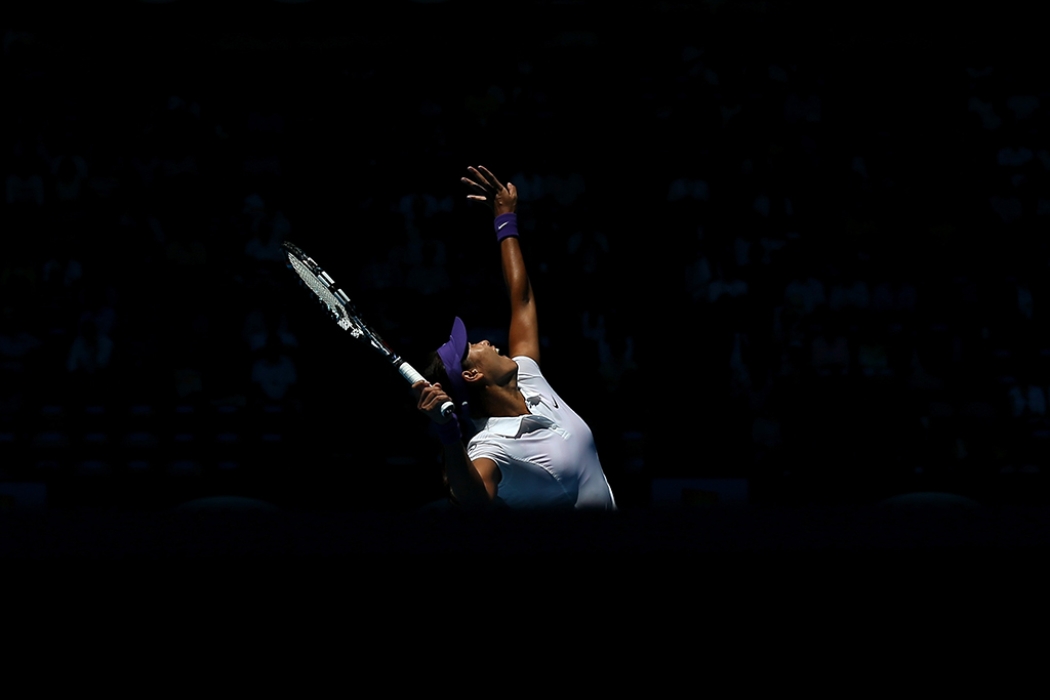
Love 15: Most inspiring stars of women's tennis (Part III)
The game took some time to warm to computer rankings. The rolling, 52-week report card on the players wasn’t as thrilling or convincing as a stadium-shaking Grand Slam victory. Newspapers, magazines and other pundits continued to issue their annual rankings lists. The International Tennis Federation still names its official world champions, giving more weight to majors; its 2022 men’s No.1 was Novak Djokovic, not top-ranked Carlos Alcaraz.
But the No.1 ranking has emerged as one of the ultimate prizes in tennis, an end in itself rather than a byproduct of a Grand Slam title. The pursuit of No.1, once almost an afterthought, is the overarching narrative in the game.
From snail mail to live rankings
No one had any inkling in the freewheeling 1970s that computer rankings would become so ubiquitous and influential. Tennis was ahead of the curve – golf didn’t produce official world rankings for men until 1986 and unbelievably for women not until 2006. But the ranking system in those pioneering days was far from a slick operation.
Doubles rankings didn’t arrive until 1976, women’s rankings were inaugurated in 1975 and ATP rankings weren’t issued weekly until 1979. In the early years, they were published at irregular intervals, sometimes six weeks apart.
The ATP didn’t even own the computer that produced the rankings. In the mid-70s, ATP employees would take the reams of player statistics to a nearby Los Angeles aerospace company, to run through their mainframe. The rankings would be delivered on gigantic sheets of computer paper, to be pasted up in the ATP office and distributed at circuit events around the world.
Up to the mid-1980s, before fax and internet, the rankings were published in the ATP newspaper, International Tennis Weekly, and delivered via snail mail. A far cry from today’s digital data smorgasbord, with up-to-the-minute live rankings and every conceivable stat at every fan’s fingertips.
Rankings as player power
Computer rankings sprang from the dawn of the Open era and its rising tide of player power. Early pros were agitating for more control over their careers, with the formation of the player union Association of Tennis Professionals (ATP) in 1972 and the ATP boycott of Wimbledon in 1973. The rankings system, created by the players for the players, was another bold leap into the professional era – and a blow to the crumbling old amateur power structure.
ATP rankings imposed a professional, merit-based criteria to ensure players were treated equally and fairly across the game’s competing fiefdoms. For the first time, everyone was singing from the same hymn sheet, or ranking list. Tournaments no longer invited players; they accepted them if they made the entry cut-off.
While the rankings today are all about celebrating No.1, the impetus for the rankings was more about figuring out who was No.28 or 56 or 100. Computer rankings were devised as the official form guide for determining tournament entry and seedings.
Prior to computer rankings, national associations and tournament committees decided their player fields, often giving preference to local names and draw cards. Players would write to tournament organisers weeks or months in advance, asking for an invitation to compete in their events. With the advent of official rankings, player livelihoods would no longer be at the whim of tournament organisers.
Discretionary power was still afforded to tournaments in the form of wildcards, and some slots were allotted for qualifying. But the bulk of the player field would enter the draw based on their ranking.
As well as giving players more autonomy over their careers, the ranking system enabled the ATP (and later WTA) to wrest more control of the game from national associations and amateur officials.
No perfect system
Today’s rankings system is unrecognisable from the first iteration. The history of tinkering, tweaking and redesign of the rankings highlights that there’s no perfect system. Every regime has had its proponents and critics, its anomalies and flaws.
Whatever the methodology, the ranking system has to strike a credible balance between quality and quantity; between recognising the Grand Slams as the tentpoles of the sport, and rewarding week-in, week-out consistency at ATP events where the majority of players earn their livelihood. It must reward champions while giving incentive to underdogs to climb the ladder, without skewing in favour of one group at the expense of another.
ATP rankings in the 1970s and 1980s used the average system. Tournament points accrued (increasing in number with every round) were divided by the number of tournaments played, with a minimum divisor of 12.
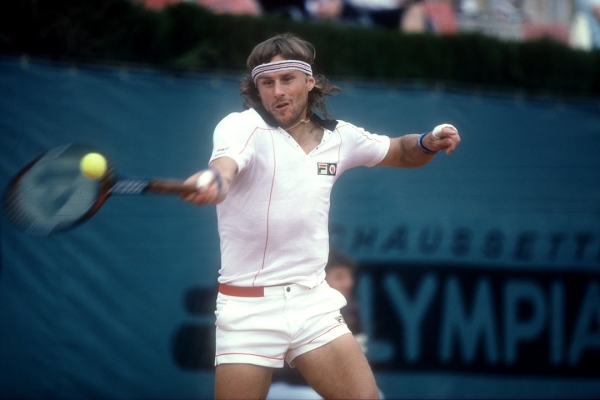
Players couldn’t simply overtake higher-ranked foes by playing more events. The more tournaments, the greater the divisor. Workhorses felt penalised by the average system, with its diminishing returns for increased play.
Another feature of this system was bonus points, awarded for wins over players ranked in the top 150 (with a top-five scalp worth 30 points). So, while tournament points were awarded for how deep a player went in an event, bonus points recognised the calibre of opponent. Semifinalists at the same event might each receive four different points totals, depending on the rankings of opponents they beat.
Bonus points were universally loathed by top players, who felt they added a bounty to their heads, in addition to the pressure of defending their hefty points from the biggest events.
An anomaly of the average system was that it could reward players for competing less. A career-high ranking could be attained while out injured or on holiday. In 1986, for instance, French hero Yannick Noah missed Wimbledon with injury and rose to a career-best No.3. Instead of a divisor of 17, his points total was divided by 16, boosting his average and allowing him to overtake 18-year-old Boris Becker, who defended his Wimbledon title but received no ranking reward, stuck at No.4.
For top players, whose consistency ensured high averages from relatively lean schedules, there was a disincentive to play more and risk diluting their average. As a result, the superstars were lured to big-money exhibitions.
The advent of the ATP Tour in 1990 aimed at rectifying these flaws by getting players to compete more often on effectively their own circuit – the ATP Tour being a partnership between players and tournament directors.
Through the 1990s, ATP rankings used a ‘Best-14’ system. The points average was scrapped, along with bonus points, in favor of a higher required number of events – 14 instead of 12 – with the sweetener that only 14 events would count. Players could discard poor results at any event. The more they played, the more they could cherry-pick what went towards their points tally.
Howls of protest ensued. “We’re the only sport where every game doesn’t count,” said long-time No.1 Ivan Lendl in 1992. “You should not be allowed to have 15 lousy results and they don’t count because you have 14 better ones.”
The system had tipped too far towards quantity over quality. And the ATP Tour overplayed its hand by diminishing the Grand Slams, which did not have to count a jot in a player’s ranking. In 1990, Stefan Edberg was the year-end No.1 despite losing first round at both the French and US Opens. Can you have a ranking system that doesn’t count majors?
The most scathing criticism came from top players. “Just because you’re No.1 on the computer, doesn’t mean you’re the best player in the world,” taunted Pete Sampras, the season-ending No.1 for a record six consecutive years (1993-98).
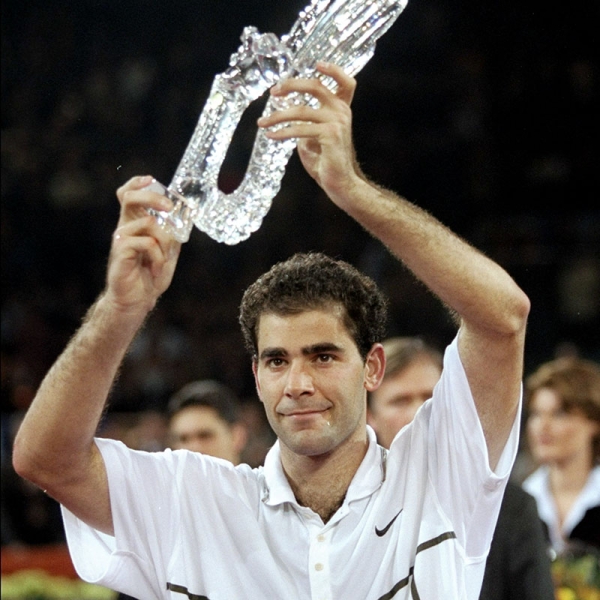
“To me, the ranking system is like giving a professional golfer mulligans,” said fellow No.1 Andre Agassi. “They could hit a bad shot and say, ‘You know what? Let’s just not count that one. But we will count it if you hit a better one.’”
The Best-14 system also enabled surface specialists to shark up the bulk of their ranking points on their preferred courts. In early 1996, Thomas Muster ascended to No.1 on the strength of his clay fiefdom. The Austrian strongman won 12 events in 1995, 11 of them on clay.
“I feel that Thomas is the best player in the world on clay,” Sampras told the Los Angeles Times . “As far as him being the best player … I don’t quite swallow that.”
Stung by the criticism from fellow No.1s, Muster protested: “This is the system … it’s not like I’m buying the points at a supermarket.”
Two years on, in March 1998, that system propelled Marcelo Rios to No.1. The first South American atop the rankings, the Chilean is also the only No.1 without a major title.
The new millennium brought a radical rethink. Believing fans were confused by the rolling 52-week rankings, the ATP promoted the Champions Race as the new ranking system in 2000. Players started the year on zero points – like Formula One – and amassed points through the season, before No.1 was crowned at year’s end.
Only problem was, the Champions Race couldn’t determine tournament entry cut-offs and seedings. The former rankings were still required for this purpose. Rebranded the Tournament Entry System and buried from public view, it existed as a shadow ranking system.
No one was fooled as to the ‘real’ rankings. Lleyton Hewitt, leader of the Race in early 2000, didn’t consider himself No.1 and nor did anyone else. The flinty Aussie eventually reached the summit as season-ending No.1 in 2001, as the US Open and Masters champion.
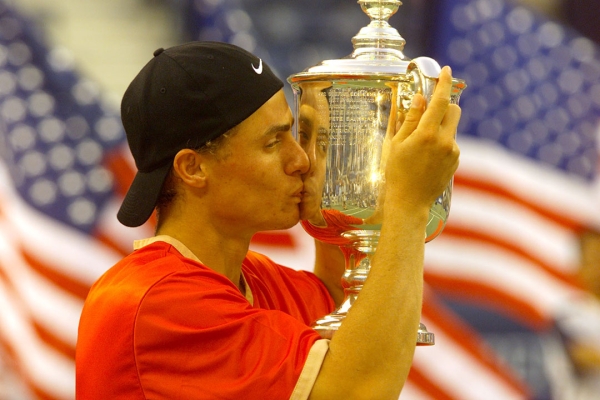
The ATP swapped one confusion for another. Fans wondered why Hewitt, as No.1 in the Champions Race, was not seeded No.1 at tournaments. The race format also deprived the game of the excitement of hailing a new No.1 mid-season.
The race experiment felt like an overreaction to season 1999, the most crowded at the top, when five men – Sampras, Carlos Moya, Yevgeny Kafelnikov, Agassi and Patrick Rafter – ruled at No.1. Riveting alpha-male showdown or revolving door in the penthouse? The Best-14 system had cheapened the feat of reaching No.1. If the top ranking can change hands eight times in a season, is it such a singular achievement?
At the same time, in reforms to the Entry Ranking System, the ATP moved to correct the quantity-over-quality bias and also give the Grand Slams their due by compulsory inclusion of results from the majors and Masters series in a Mandatory 13. A ‘best five’ component remained as incentive for more play in smaller events.
This remains essentially the ranking system today, with a ‘best seven’ component extending the total events counted to 19 (20 for the elite eight who contest the ATP Finals). So, while not every result counts, all the top-level events do.
Even with the disruption of the pandemic, and Wimbledon being stripped of rankings points in 2022 over the exclusion of Russian and Belarusian players, the current system enjoys a greater level of acceptance than ever before.
The No.1 who wasn't
For the greatest ranking credibility crisis – or epic fail – see the sad saga of Guillermo Vilas. On every measure but the ATP rankings, the Argentine icon was No.1 in 1977.
The soulful, top-spinning ‘Poet of the Pampas’ was the only multiple major winner – at Paris and New York (the last year the US Open was played on green clay) – and runner-up at the Australian Open on Kooyong grass.
The attritional left-hander compiled all-time records that still stand: most titles in a season (16), most match wins in a season (136) and longest winning streak in the Open era (46 matches).
Despite a banner year that would rate alongside any No.1, Vilas ended 1977 at No.2, behind Jimmy Connors, his victim in the US Open final. The average system punished Vilas for his Herculean schedule. Connors topped the rankings with zero majors and eight titles, half the record haul of Vilas.
“I was winning and winning and could never take the next step to No.1,” a visibly affected Vilas rued in 2017. “The system did not help me at all.”
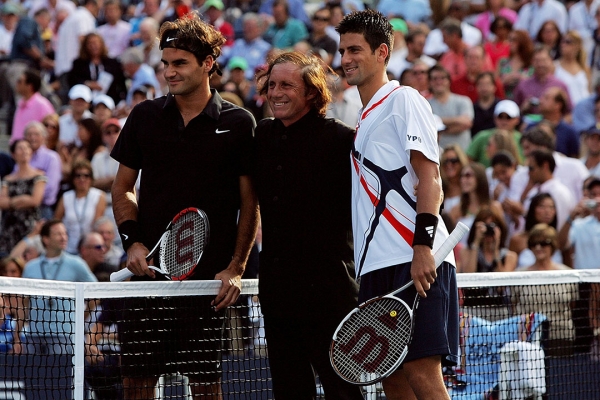
In 2014, Argentine tennis journalist Eduardo Puppo and Australian-based mathematician Marian Ciulpan campaigned to have Vilas retrospectively recognised as No.1 by the ATP. (The drama is the subject of the Netflix documentary Guillermo Vilas: Settling the Score .)
The twist? Painstaking analysis of tournament and rankings statistics across the 1973-78 seasons led to their conclusion that Vilas would have ranked No.1 not in 1977 but in September-October 1975, and again in early 1976, if rankings had been issued in those weeks.
The Vilas petition drew inspiration from a similar ranking saga involving Evonne Goolagong Cawley. In 2007, the WTA acknowledged that the Aussie would have been No.1 for two weeks in 1976, had official rankings been produced weekly, as they are today. WTA history was amended and Goolagong Cawley awarded her place in the No.1 honour roll, 31 years after the fact.
Alas for Vilas, the ATP did not follow suit. While then-CEO Chris Kermode acknowledged the enormous effort and emotional toll that went into the campaign, the ATP did not want to open a Pandora’s Box of future claims from players arguing for latter-day recognition of their ‘real’ career peak. Although Vilas is probably the only player who could mount a case for retrospective No.1 status, the ATP chose not to make an exception for him.
“It’s a huge deal for a player, so we haven’t taken this lightly at all,” Kermode explained in May 2015, having taken months to pore over the Vilas case. “We just can’t adopt this version of rankings as official history. I feel 100 per cent confident (that) rewriting history is impossible.”
Final proof, if it were needed, that the ranking system can be as ruthless as any opponent. Both career-maker and heartbreaker.

Carlos Alcaraz, the ATP's newest world No.1, is the cover star of the August/September 2023 issue of Australian Tennis Magazine .

IMAGES
VIDEO
COMMENTS
The 1970 Pepsi-Cola ILTF Grand Prix was a tennis circuit administered by the International Lawn Tennis Federation (ILTF) which served as a forerunner to the current Association of Tennis Professionals (ATP) World Tour and the Women's Tennis Association (WTA) Tour. It was the inaugural edition of the Grand Prix circuit and consisted of men's tournaments recognised by the ILTF.
Past results, draws and seeds from the tournament archive in men's professional tennis on the ATP Tour. ... 1970. Singles Winner Dennis Ralston Results. Hampton. Hampton, United States | 2 - 8 March, 1970. Singles Winner Stan Smith Results. London-1. London, Great Britain | 4 - 7 March, 1970. Singles Winner ...
Fifty years may have passed, but for Stan Smith the memories of the 1970 Pepsi-Cola Masters [now named the Nitto ATP Finals] remain crystal clear — the cavernous and cold arena, the single light bulb in the locker room, Jack Kramer leading fans in a rendition of 'Happy Birthday' to mark the inaugural champion's 24th birthday, and the frantic dash from Tokyo to return home and start ...
Past results, draws and seeds from the tournament archive in men's professional tennis on the ATP Tour. Past results, draws and seeds from the tournament archive in men's professional tennis on the ATP Tour. ... 1970 2023 2023 2022 2021 2020 2019 2018 2017 2016 ...
Stan Smith/ATP World Tour. Stan Smith won the singles and doubles titles at the first year-end championships at Tokyo in 1970. By Stan Smith. As you watch some of the greatest players of all time compete this year at the Barclays ATP World Tour Finals, stepping out from their personal locker rooms, through dry ice and into the spotlight of The ...
Past results, draws and seeds from the tournament archive in men's professional tennis on the ATP Tour.
Right from the first Masters in Tokyo in December 1970 it became a prestigious event, and was subsequently held in Paris, Barcelona, Boston, Melbourne, Stockholm, and Houston before the event started a 13-year association with Madison Square Garden in New York from 1977 to 1989. The Masters evolved into the ATP Tour World Championships in 1990.
1970 in Tennis - ATP World Tour: results and calendar of the season. Sport Betting; Yearly calendar; Latest results ...
Nitto ATP Finals singles results of the season-ending tournament between 1970 and 1999. English. Spanish; Italian; Japanese; Inalpi Arena, Torino. 10-17 Nov, 2024 ... 1970 TOKYO, JAPAN | 9-15 DECEMBER 1970 | Surface: CARPET Stan Smith d. Rod Laver 46 63 64; Arthur Ashe d. Zeljko Franulovic 65 36 62; Ken Rosewall d.
Results archive from tournaments in men's professional tennis on the ATP Tour.
The most successful was the Grand Prix, which eventually integrated all the rival circuits. The Grand Prix of the tennis circuit tournaments were held from 1970 to 1989, and later they transformed into the ATP Tour. The list of the Grand Prix tournaments still needs to be completed, and we are doing our best to make it as complete as possible.
Nitto ATP Finals singles titlists of the season-ending tournament first held in 1970. English. Spanish; Italian; Japanese; Inalpi Arena, Torino. 10-17 Nov, 2024 Host partner. Menu. Hospitality Tickets ... Nitto ATP Finals is proudly supported by. Title Partner. Host Partner {{otherPartners[activeSlide].Title}}
Weekly ATP and Elo rankings. Ultimate Tennis Statistics. Updated: 18-12-2023. Player: Home; GOAT List; ... ATP Rankings Table 28-12-1970 ... Tournament level adjustment is: Grand Slam 100%, Tour Finals 90%, Masters 85%, Olympics 80%, ATP 500 75% and all others 70%;
The ATP Finals is the season-ending championship of the ATP Tour.It is the most significant tennis event in the men's annual calendar after the four majors, as it features the top eight singles players and top eight doubles teams based on their results throughout the season.The eighth spot is reserved, if needed, for a player or team who won a major in the current year and is ranked from ninth ...
The ATP Finals is a season-ending tournament in the Association of Tennis Professionals (ATP) World Tour, featuring the top eight singles players and doubles teams of the ATP Rankings. The championship was first held in 1970 and was part of the Grand Prix Tennis Circuit. Now it is the second most prestigious worldwide competition in tennis ...
ATP Finals champions by year, past winners list, history since 1970. Nitto ATP World Tour Finals is the 2nd top tier men's Tennis tournament in the Tennis Sport. It is held every year in November at Turin, Italy till 2025. It is part of the Association of Tennis Professionals (ATP) World Tour.
As Charlie Pasarell, who so many professional tennis players have to thank, insists, "The ATP Rankings changed everything. "In August 1973, the most deserving, qualified players that entered events regardless of their nationality were guaranteed participation. This was the biggest impact of the ATP Rankings to the worldwide tour.
ATP rankings in the 1970s and 1980s used the average system. Tournament points accrued (increasing in number with every round) were divided by the number of tournaments played, with a minimum divisor of 12. ... The advent of the ATP Tour in 1990 aimed at rectifying these flaws by getting players to compete more often on effectively their own ...
The 1971 Pepsi Cola Grand Prix was a professional tennis circuit held that year. It incorporated three of the four Grand Slam tournaments, the Grand Prix tournaments. It was the second edition of the Grand Prix circuit and was run by the International Lawn Tennis Federation (ITLF). In addition to regular tournament prize money a bonus prize money pool of £60,000 ($150,000) was available to be ...
The 1973 Commercial Union Assurance Grand Prix was a tennis circuit administered by the International Lawn Tennis Federation (ILTF) which served as a forerunner to the current Association of Tennis Professionals (ATP) World Tour and the Women's Tennis Association (WTA) Tour. The circuit consisted of the four modern Grand Slam tournaments and open tournaments recognised by the ILTF.
The 1972 Commercial Union Assurance Grand Prix was a professional tennis circuit held that year and organized by the International Lawn Tennis Federation (ILTF). It consisted of 33 Grand Prix tournaments in different categories including three of the four Grand Slam tournaments and was followed by a season-ending Masters tournament.The circuit ran from February through November.
The 1977 Colgate-Palmolive Grand Prix was a professional tennis circuit administered by the International Lawn Tennis Federation (ILTF, later the ITF) which served as a forerunner to the current Association of Tennis Professionals (ATP) World Tour and the Women's Tennis Association (WTA) Tour. The circuit consisted of the four modern Grand Slam tournaments and open tournaments recognised by ...
The 1975 Commercial Union Assurance Grand Prix was a professional tennis circuit administered by the International Lawn Tennis Federation (ILTF) which served as a forerunner to the current Association of Tennis Professionals (ATP) World Tour and the Women's Tennis Association (WTA) Tour. The circuit consisted of the four modern Grand Slam tournaments and open tournaments recognised by the ILTF.
The 2024 ATP Tour is the global elite men's professional tennis circuit organized by the Association of Tennis Professionals (ATP) for the 2024 tennis season. The 2024 ATP Tour calendar comprises the Grand Slam tournaments, supervised by the International Tennis Federation (ITF), the ATP Finals, the ATP Masters 1000, the United Cup (organized with the WTA), the ATP 500 series and the ATP 250 ...